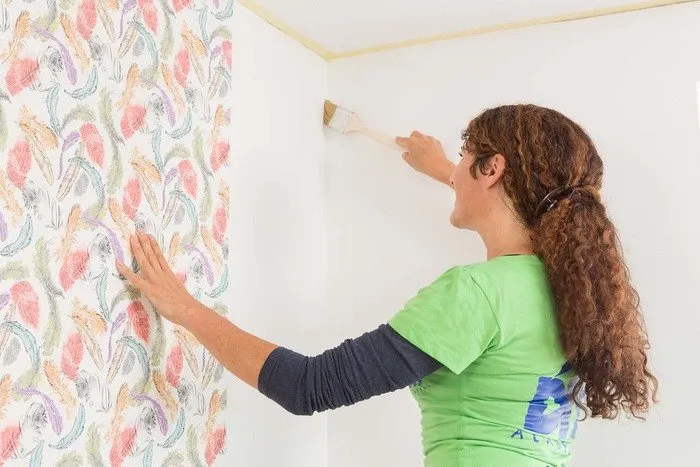Proper Disposal of Wallpaper Paste: A Guide for UK Residents
The process of redecorating a space often involves removing old wallpaper and disposing of various materials, including wallpaper paste. Proper disposal of wallpaper paste is crucial to ensure environmental responsibility and compliance with local regulations, especially in the United Kingdom. This article will provide detailed insights into the eco-friendly and lawful ways to dispose of wallpaper paste, emphasizing a keyword density of 2.0.
Disposal of Wallpaper Paste
Understanding Wallpaper Paste
Before delving into disposal methods, it’s essential to comprehend the composition of wallpaper paste. Commonly made from a mixture of water, flour, and other additives, wallpaper paste is non-toxic but can pose challenges if not disposed of properly.
Eco-Friendly Disposal Methods
Water-Based Paste
Water-based wallpaper paste is easier to handle environmentally. Diluting the paste with water and allowing it to solidify before disposal is an effective approach. This reduces the environmental impact and facilitates safe disposal.
Container Disposal
Seal the wallpaper paste in airtight containers before disposal. This prevents spillage and contamination of other waste, ensuring a clean and eco-friendly disposal process.

Legal Aspects in the UK
Local Regulations
Different regions in the UK may have specific regulations regarding waste disposal. Familiarize yourself with local guidelines to avoid any legal complications.
Landfill Disposal
While landfill disposal is an option, it’s important to note that certain landfills may have restrictions on the disposal of certain types of waste. Always check with the local waste management authorities.
Recycling Opportunities
Check for Recyclability
Investigate whether the wallpaper paste or its packaging is recyclable. Recycling is a sustainable option that reduces the environmental impact of waste disposal.
Recycling Centers
Identify local recycling centers that accept wallpaper paste or its containers. Some facilities may have specialized processes for handling such materials.
Alternative Methods for Disposal of Wallpaper Paste
Composting
In cases where the wallpaper paste is organic or free from harmful chemicals, consider composting. Mix it with other organic materials to create a compost pile, aiding in nutrient-rich soil development for your garden.
Community Programs
Check for community-based recycling programs that may offer specific disposal solutions for wallpaper paste. Some areas have specialized initiatives for handling home renovation waste.
Preventing Environmental Impact
Reducing Excess Paste
Minimize excess wallpaper paste during application to avoid unnecessary disposal. Using just enough paste ensures a cleaner application and reduces the amount of leftover material.
Eco-Friendly Wallpaper Choices
Opt for environmentally friendly wallpaper options that use water-based adhesives or other eco-conscious materials. This not only simplifies the disposal process but also contributes to sustainable living practices.
Disposal of Wallpaper Paste – Safety Tips
Protective Measures
When handling disposal of wallpaper paste for , wear protective gear such as gloves to avoid direct contact. While most wallpaper paste is non-toxic, taking precautions ensures personal safety.
Ventilation
If dealing with large quantities of wallpaper paste, ensure proper ventilation in the disposal area. Adequate airflow prevents the buildup of potentially harmful fumes.
Professional Disposal Services
Hiring Waste Disposal Services
In cases where wallpaper paste disposal becomes challenging or involves a significant amount of waste, consider hiring professional waste disposal services. These services are equipped to handle various types of waste, ensuring safe and responsible disposal.
Waste Removal Companies
Research waste removal companies that specialize in construction and renovation waste. They can provide tailored solutions for disposing of wallpaper paste and other renovation materials.
How to Dispose of Wallpaper Paste
Disposing of wallpaper paste is a crucial step in maintaining environmental responsibility during home renovations. To ensure a clean and eco-friendly process, consider the following methods:
- Water-Based Paste: For water-based wallpaper paste, dilute it with water before disposal. Allowing the mixture to solidify not only facilitates easier handling but also minimizes its environmental impact.
- Container Sealing: Seal wallpaper paste in airtight containers before disposal. This prevents spills and contamination, ensuring a safe and tidy disposal process. Additionally, sealed containers can be more easily managed by waste disposal services.
- Local Regulations: Familiarize yourself with local regulations regarding waste disposal. Different regions may have specific guidelines, and compliance with these regulations is essential to avoid legal complications.
- Recycling Opportunities: Check if the wallpaper paste or its packaging is recyclable. Recycling centers may have specialized processes for handling such materials, contributing to a more sustainable waste management system.
By following these simple steps, individuals can dispose of wallpaper paste responsibly, minimizing its environmental impact and contributing to a cleaner, greener living space.
Enhanced Insights into Disposal of Wallpaper Paste : Best Practices
When considering the disposal of wallpaper paste, it’s essential to delve deeper into best practices to ensure not only environmental responsibility but also compliance with local regulations and optimal safety. Here’s an extended guide on how to dispose of wallpaper paste effectively.
Alternative Disposal Methods
- Composting: In environmentally conscious households, consider composting organic or chemical-free wallpaper paste. Combining it with other organic materials creates a nutrient-rich compost, contributing to sustainable gardening practices.
- Community Programs: Explore community-based recycling programs that may offer specialized solutions for wallpaper paste disposal. These initiatives often provide avenues for responsible waste management.
Are You Looking For Disposal of Electronics Waste?
Reducing Environmental Impact:
- Minimizing Excess Paste: During the wallpaper application process, use only the necessary amount of paste to reduce excess material. This not only ensures a neater application but also decreases the volume of leftover paste for disposal.
- Eco-Friendly Wallpaper Choices: Opt for wallpapers that utilize eco-conscious materials or water-based adhesives. Choosing environmentally friendly options simplifies the disposal process and aligns with sustainable living practices.
Safety Measures during Disposal
- Protective Gear: Wear protective gear, such as gloves, when handling wallpaper paste for disposal. While most wallpaper paste is non-toxic, taking precautions ensures personal safety.
- Ventilation: Ensure proper ventilation in the disposal area, especially when dealing with larger quantities of wallpaper paste. Adequate airflow minimizes the potential buildup of fumes.
Professional Disposal Services
- Waste Removal Companies: In cases where wallpaper paste disposal becomes challenging or involves significant waste, consider hiring professional waste removal services. These companies specialize in handling various types of waste, ensuring safe and responsible disposal.
- Waste Disposal Services: Research waste disposal services that cater to construction and renovation waste. These professionals can provide tailored solutions for wallpaper paste and other renovation materials.
Educational Resources:
- Local Council Guidance: Many local councils offer informative resources on waste disposal. Check their websites or reach out to them directly for guidelines specific to your area.
- DIY Renovation Guides: Explore DIY renovation guides that include information on eco-friendly practices. Such guides often provide insights into responsible waste disposal methods tailored to home improvement projects.
Future Considerations:
- Technological Advancements: Keep abreast of advancements in wallpaper paste technology. Manufacturers may develop new formulations that are even more environmentally friendly, simplifying the disposal process in the future.
- Community Awareness: Participate in or support community awareness campaigns on responsible waste disposal. Promoting eco-conscious practices within the community can lead to positive changes in disposal habits over time.
Responsible disposal of wallpaper paste requires a holistic approach, considering alternative methods, preventing excess use, adhering to safety measures, and staying informed about professional services. By incorporating these practices, individuals can contribute to a sustainable and environmentally conscious approach to managing waste during home renovations.
Conclusion
In conclusion, the disposal of wallpaper paste in the UK should be approached with an understanding of both environmental impact and legal considerations. By following eco-friendly practices, adhering to local regulations, and exploring recycling options, residents can contribute to a cleaner and more sustainable environment while achieving a successful renovation.






